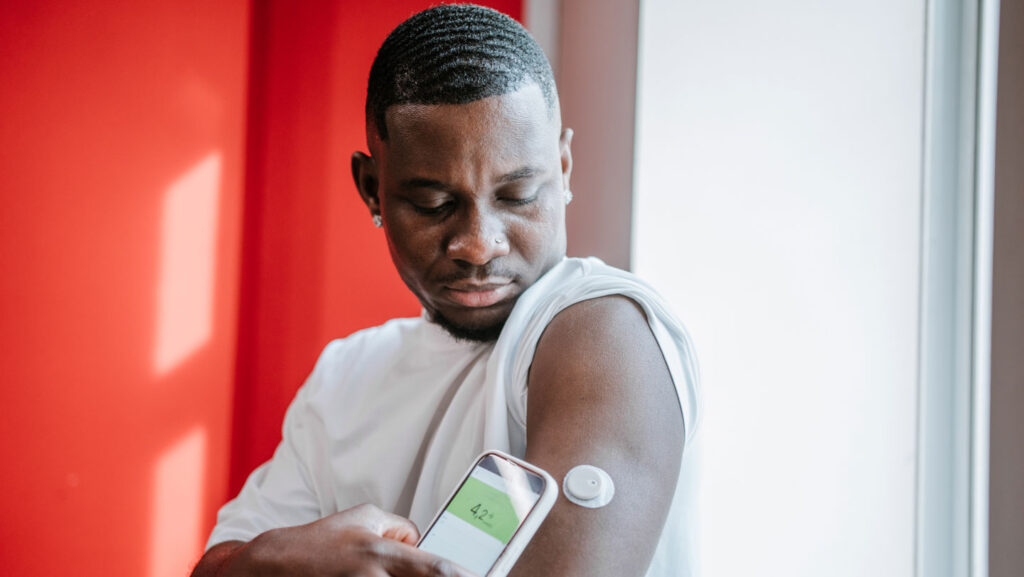Nicole Spartano does not have diabetes. But the Boston University epidemiologist has occasionally worn a continuous glucose monitor, or CGM, a device once reserved for those with the condition. Her desire to understand how factors such as food, sleep and exercise influence her blood sugar levels stems from her own research into how CGMs might help individuals ward off diseases like diabetes and feel healthier overall.
People with diabetes use CGMs to monitor their blood sugar level and need for supplementary insulin, the hormone (produced naturally in most people) that enables cells to consume that sugar for much-needed energy. Less is known, though, about how to interpret CGM readings in people without the condition, Spartano and others say.
Nonetheless, the devices’ popularity has exploded in recent years. That’s in part thanks to endorsements from influencers like Casey Means, President Donald Trump’s nominee for U.S. surgeon general. In her 2024 book, Good Energy, Means, who cofounded a company that sells the devices, touted CGMs as “the most powerful technology for generating the data and awareness to rectify our Bad Energy crisis in the Western world.”
Last year, the U.S. Food and Drug Administration approved the sale of CGMs without a prescription. A single device, which typically lasts for two weeks and is then discarded, retails for roughly $50. CGMs attach to the arm or abdomen via a small, sensor-equipped needle that sits in interstitial fluid just below the skin. Glucose passes from the blood into that fluid. The sensors then transmit data every few minutes to a receiver or smartphone.
Based on conventional blood tests, blood sugar levels from 70 to 140 milligrams per deciliter while not fasting are widely considered optimal. Frequent spikes and prolonged time above that range have been linked to an increased risk of developing cardiovascular disease, as well as fatigue and anxiety.
Because people’s responses to foods vary widely, CGMs can be used to develop personalized diet plans, says Ruchi Mathur, an endocrinologist at Cedars-Sinai Medical Center in Los Angeles. Mathur advises curious patients to treat the CGM as an experiment. If a patient wants to know how they respond to a tuna sandwich, they might go with white bread one day and wheat the next.
But interpreting CGM data is complex. The same meal could prompt different glucose responses from one week to the next, researchers reported in January in the American Journal of Clinical Nutrition. And Spartano and her team found that most individuals without diabetes spend roughly three hours per day with blood sugar levels above 140 mg/dL. If CGMs become standard health tools, the optimal glycemic range may need a rethink, the team notes. CGM readings don’t yet translate to broadly applicable medical guidance. When Spartano asked clinicians if certain patients’ complex CGM readings indicated a need for further testing, they rarely agreed.
“We want to be able to tell [people], ‘This looks normal. This looks abnormal,’” Spartano says. “We don’t really know what is normal.”
There’s no standard way to interpret CGM data, concurs Vijaya Surampudi, an endocrinologist and nutrition expert at UCLA Health. But practitioners familiar with the devices can help patients interpret their data. When Surampudi advises patients without diabetes to try CGMs, she also recommends that they track foods, stressors, sleep and exercise.
Spartano says don’t put too much stock in CGM data. Her results showed that scarfing rice kept her glucose levels flat, while chewing it slowly triggered a spike. She could have concluded that she should inhale her meal to block her body from processing the sugars. But health is much broader than a single metric. Scarfing food can encourage overeating or prevent nutrient absorption. Blood sugar, she says, “shouldn’t be all we focus on.”
Read the full article here

















